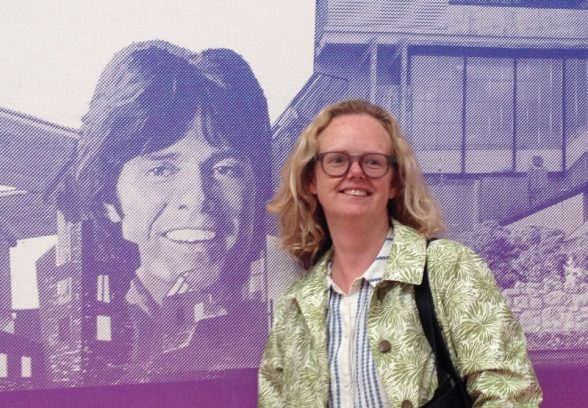This website uses cookies
This website uses cookies to enable it to function properly and to analyse how the website is used. Please click 'Close' to accept and continue using the website.



“Did you know that I was the enemy?” says Rem Koolhaas to Charles Brooking, in a fascinating interview posted online. Koolhaas, Pritzker Prise winner, author of Delirious New York. I’ve visited his collection, which includes a good range of parts from all sorts of styles of C20 buildings, housed in storage units out the back of his home in Cranleigh, Surrey, and in nearby barns. It is a great resource that desperately needs a permanent, properly funded and publicly accessible home.
Hopefully, the fact that part of the Brooking Collection has been included in Koolhaas’s Biennale will give Brooking the boost he needs. A skinny metal window from Portsmouth’s demolished Tricorn Centre, and a nice art deco casement are star exhibits. But why does Koolhaas think he is the enemy of conservationists? He expands: “Gavin Stamp and Terry Farrell are considered defenders of postmodern architecture, a mode of architecture inspired by the kind of architecture you are collecting … are you surprised that you are invited to play a significant role in an exhibition organised by someone who is supposed to be the enemy in their eyes”. Brooking looks bemused. The entrenchment of these sorts of attitudes (and there is a lot one could unpack from that sentence) in parts of the architectural profession probably explain why we were not more involved with the Biennale (although we were consulted early on by the commissioner of the British Pavilion, Vicky Richardson—Brunswick Centre resident and daughter of both a modern architect and an architectural historian, the latter our ex-President, Margaret Richardson—and by several of those bidding to run the project). I think it is a one-sided and very misplaced antipathy. Let us hope it is one that the Biennale itself will help to undermine.
One thing that encourages me is that when Koolhaas announced that the 2014 Biennale would examine the architectural history of the last 100 years rather than looking at contemporary architecture, he described the period about which we care so much as one in which “architectures that were once specific and local have become interchangeable and global. National identity has seemingly been sacrificed to modernity.” This seemed a very reductive (and pessimistic) narrative and one which our casework and especially the selection process of our 100 Buildings project does not support. When the Biennale opened, however, it was billed as illustrating “a radical splintering of modernities in a century where the homogenizing process of globalization appeared to be the master narrative…” This is an interesting shift. I would like to argue that conservation itself can be part of modernity; I don’t see Koolhaas as the enemy.
Perhaps put off by a subliminal anti-conservationist vibe, I initially wasn’t going to go to Venice, but hearing that two of Milton Keynes’ concrete cows – which I last saw looking very sorry for themselves by a dual carriageway as we left a site visit – were making the trip finally pushed me to book a ticket. That and the promise of a combination of “high seriousness and high camp” in the British pavilion. I am glad I went, and very much hope that the celebration of the utopian ideals of projects, and the depiction of their powerful forms will provoke better informed debate about their potential futures—and yes, Robin Hood Gardens, is the example where this is most urgently necessary.
At a future date, I’ll return to the subject of why Cliff Richard’s ‘Take me High’ (included in the Biennale, as the soundtrack album cover shows Cliff grinning in front of Spaghetti Junction), can in fact be interpreted as a very subtle commentary on attitudes to Modernism and the revival of interest in Victorian industrialism—nuances of which the Biennale certainly missed, but I’ve yet to bring myself to re-watch it.
Catherine Croft

Become a C20 member today and help save our modern design heritage.
Comments